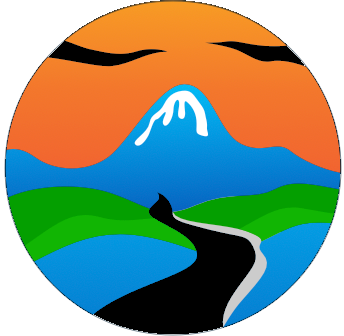Blue Heron Mine / Trail
I’ve been staying a few days at the Bear Creek Horse Camp in the Big South Fork National Recreation Area. I needed a break from the road and a few quiet days to reset. It’s a small campground, mostly filled with people traveling with horses. There are 22 sites total, managed by the National Park Service. For some reason, three of them seem to get passed over by the horse owners—probably because they’re a bit smaller. I took one of those three and settled in for a three-day stay.
My neighbors, who keep two horses, told me about the Blue Heron Loop Trail, also within the Big South Fork National River and Recreation Area. The trail is named not just for a bird but for the former mining community of Blue Heron, Kentucky—also known as Mine 18—once located near the trailhead. The site includes a visitor center, a small concession area, and the restored tipple (coal-sorting and loading structure) with coal cars still positioned beneath it. After a full day of doing absolutely nothing, I was ready to move again.
The Blue Heron Loop turned out to be one of my favorite hikes this year. It’s officially listed at about 6.5 miles, but with my usual side wanderings, I logged just under ten. The route begins near the old mining camp and climbs through damp forest past sandstone cliffs and weather-worn rock formations shaped by time. In places, a dark vein of coal still runs through the stone—a reminder of what once drew people to this valley. The trail weaves in and out of a shared horse path, the ground soft from days of rain, with hoofprints and boot tracks mixing in the mud. The fall colors weren’t yet at their peak, but you could see the change starting—just a hint of gold and rust showing through the green.
Beyond the natural beauty, the Blue Heron site adds a layer of history that’s hard to ignore. The mining camp operated from 1937 until December 1962 under the Stearns Coal & Lumber Company. After it closed, the buildings were removed or left to decay. In the 1980s, the Park Service re-created the site as an open-air “ghost structure” museum, with steel frames marking the locations of the original buildings. Audio stations let visitors hear the voices of former residents, telling what life was like in the camp. The loop trail covers high plateaus, shaded hollows, and river overlooks—including Devil’s Jump and Cracks in the Rock—making it a blend of landscape and memory.
About four miles in, I stopped to take a break and drink some water. I found a log behind a large rock and sat for a few quiet minutes, just listening to the woods. A runner came by and looked startled to see me there. I said, “Perfect weather for a run,” and he smiled. “You’re right,” he said, “I just hope it doesn’t rain.” About an hour later, I saw him again looping back, still running strong. There’s something grounding about those quick trail encounters—just enough conversation to remind you that you’re both out there for the same reason.
Near the end of the loop, the trail opened to a wide overlook above the valley. I stopped to take photos, the mist still hanging low and the air cool and damp. That’s when a golden retriever came charging down the hill toward me, off leash and fast. Instinct kicked in—I started swinging my hiking poles, not to hurt it, just to keep space. The owner came running after, out of breath, grabbed the dog, and without a word kept going. No apology, no leash. I shook it off and finished the hike, thinking how a trail that started gray and quiet ended up being one of the most memorable days I’ve had on the road this fall.
Back at the trailhead, I walked through the displays in the pavilions. A family was heading toward me from the parking lot, waving as they passed. “Interesting place!” the woman called out. Their car had Indiana plates. It’s a large area, and I can imagine that in summer it’s packed with visitors coming to learn about the mine and explore the trails.
I stayed a little longer trying to capture photos in the fading light. By the time I drove back to camp, it was past seven. My neighbors were sitting under their awning, a fire burning nearby as they ate dinner. They’d told me they preferred to cook outside no matter the weather. I thanked them again for pointing me toward the Blue Heron Trail.















